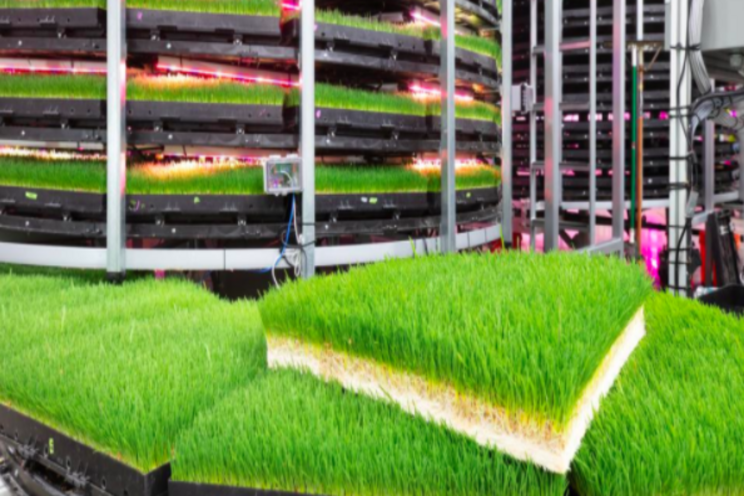Vertical farms use big data & robotics to grow animal feed
Added on 06 January 2021

"COVID-19 has highlighted the vulnerability of agriculture systems and the importance of maximizing animal health and nutrition," said Frederic. "We expect investment in animal ag hardware, such as robotics and wearables, to pick up in the near term given the rising concern over food security and animal supply chains."
Indoor vertical farming for animal feed
Animal Ag vertical farming newcomer Grov Technologies, which was acquired by Nu Skin Enterprises (NYSE:NUS) in 2016, announced in December 2020, the company was collaborating with Amazon Web Services (AWS) to apply cloud-based machine learning capabilities to their vertical robotic farming indoor platform to grow high-density nutrient (HDN) animal feed.
According to Steve Lindsley, president of Grov Technologies, most indoor farming around the world is focused on the production of vegetables and greens for human consumption.
"Grov focuses on producing feed for animals to produce the other foods we depend on," said Lindsley. "Climate change, droughts, foods, etc., are reducing the water and arable land needed. Highly digestible feed has the potential to reduce animal emissions. Farmers will need to produce more with less under more challenging conditions. Indoor vertical farming help mitigate some of these issues."
Less water, less land
Lindsley adds that the most striking change of using a vertical farm is producing feed using less water, a fraction of the land, and reducing the cost and carbon emissions from transportation by placing indoor feed centers next to the cattle they feed.
"Many locations around the world are struggling to feed their populations, let alone their animals, [..] we put the farmer in a better position to control his future while mitigating the effects of weather," added Lindsley.
Grov's Olympus Tower can produce 5,000 to 6,000 pounds of sprouted wheat or barley grass per day using less than five percent of the water and replacing between 35 to 50 acres compared to traditional farming. Lindsley says that the Olympus Tower requires minimal labor because it uses robotic seed-to-harvest technology.
Lindsley adds that since consumers are demanding greater visibility and traceability to proven sustainability practices, they want to know that animals are fed highly digestible and pesticide-free diets while using less water and land.
"Consumers are awakening to a greater understanding of how fragile food and feed supply chains are," said Lindsley.
Sensors, robotics and machine learning
Grov's indoor vertical farms are equipped with micro-sensors that capture temperature, humidity, water flow and growth rates from each growing tray in the tower. That data is correlated to calibrate the trays' rotation, the watering, lighting spectrum and the robotic seeding ad harvesting.
"Our technology fuses the Internet of Things (IoT), cloud, robotics, machine learning with lighting and spectrum management [..] to maximize potential yield and nutrition of a variety of crops," said Lindsley.
Lindsley believes that controlled environment agriculture is emerging as an impactful technology that can help address global climate change issues and sustainability for food and feed production.
"Covid 19 has alerted us that food and feed security is one of the most pressing issues of our day," said Lindsley. "The world is simply using too much land and water to feed animals. Increasing the use of efficient and sustainable technology can potentially make a difference."
Source: Forbes
Photo: These indoor vertical farms are designed to help farmers grow animal feed with less water and land. Credit: GROV TECHNOLOGIES
Source: Forbes
More news















